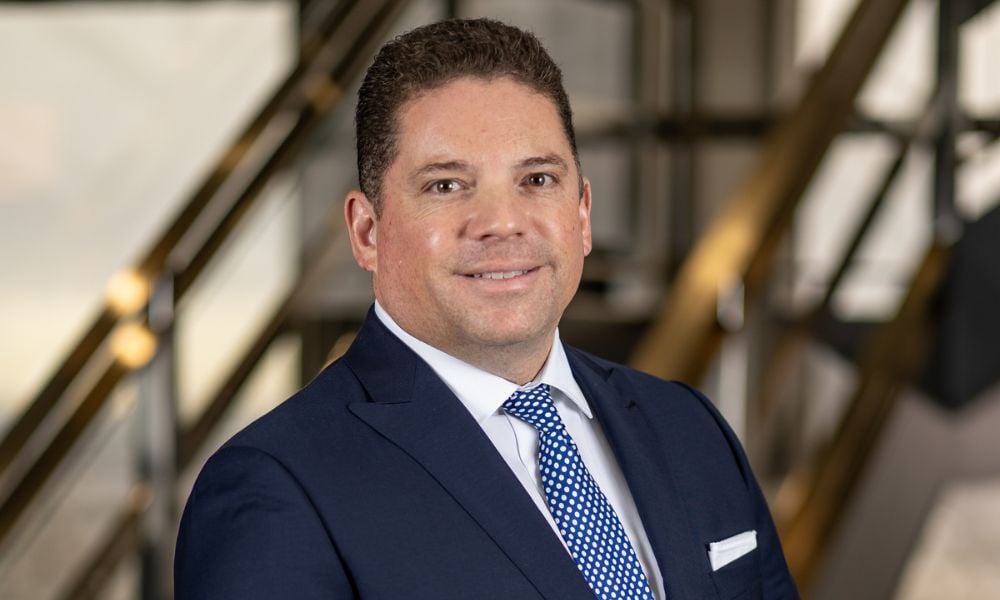Advisor explains how he builds and maintains his network of professionals, how he assesses their quality, and what younger advisors can do to get started

Darren Coleman’s clients expect him to be ‘the guy who knows the guy.’ Coleman is the senior VP and portfolio manager at Coleman Wealth Management of Raymond James. His practice is built around managing complexity for his clients, including a significant number of cross-border clients. That means, as an advisor, he needs to be able to refer his clients to experts who can solve specific issues as they arise. Coleman has a rolodex of lawyers, accountants, tax planners, even pharmacists and architects each of whom he knows can deliver a solution for his clients.
“Clients rightly expect the advisor to have a network of other experts, because we can’t be everything to everyone, we need to stay in our lane,” Coleman says. “If you’re an advisor, unless you have a legal degree you cannot give a legal opinion. The same goes for accounting. So you have to stay in your lane but you need to be aware of determining where these other skill sets are and develop a way to determine the good from the bad.”
Developing that network takes years, if not decades, along with constant maintenance. Coleman regularly attends conferences that align with his areas of expertise, like cross-border tax management, where he can meet with specialist accountants and lawyers. When he talks to those professionals, however, he ensures that they understand his value proposition for them.
Coleman often sees advisors going into networking sessions with an eye to what the professionals they’re meeting can do for them. Coleman thinks that approach is a mistake and prefers to focus on what these professionals need from him. At conferences and events, he’ll highlight the volume of referrals his practice generates, and ask lawyers, accountants, and other professionals about the kind of clients they work well with. He wants his network to understand who he is and what he can do for them.
Once that relationship is established, it has to be maintained. Some of that comes naturally in the collaborative process of client service. Coleman puts a degree of intention behind that work, too. He has one associate in his practice who is explicitly responsible for the growth and maintenance of referral relationships. Coleman sees these referral relationships as partnerships, which can often grow into personal friendships.
As advisors look to fill out their own reference rolodexes, Coleman thinks they need to first assess the problems they are seeking to solve for clients. By assessing the exact kind of complexity they want to specialize in, advisors can then seek out and build networks that support their practices. Coleman notes his focus on cross-border issues. While that is not the entirety of his practice, his specialist work means he has had to build a robust network of immigration lawyers and tax accountants on both sides of the border.
Creativity is key to network building, too. Coleman believes that advisors can win by thinking more broadly about the kind of professionals who end up working with their ideal clients. That could mean executive head hunters and luxury real estate agents. It could also mean chiropractors, physiotherapists, and golf coaches.
Just as relationships with these professionals need to be maintained, their quality of service needs to be audited. That can be challenging for advisors, simply because many of these professionals work in technical fields that are, by nature of the referral, outside an advisor’s area of expertise. Nevertheless, Coleman sees two avenues to auditing performance. The first is your own client’s satisfaction with the referral and the work done for them. Assessing that includes asking about the fit and the overall experience.
The second is a technical assessment of the quality of the work done. That may be a little harder to do for an advisor, but Coleman sees plenty of avenues in continuing education that can empower an advisor to assess the work of other professionals. For example, he has worked as a trust officer, meaning he can assess the quality of a will — even if he can’t write one for his clients.
Network building takes years, or even decades. It’s a process that never truly ends, but it’s a process that can make a huge difference for advisors and their clients. As young advisors stare at this immense project now before them, Coleman says that the best thing they can do for themselves is simply begin the work.
“You have to begin it and have the awareness that every investment you make will take years to pay off. Not getting started is the worst thing you can do,” Coleman says. “There are things you can do today to accelerate the process that weren’t possible when I started. And that’s to create a reason why people need to know you, by creating content. You can do that relatively early in your career and as long as you’re creating something that’s of value to other people, it’s a way to become known.”



